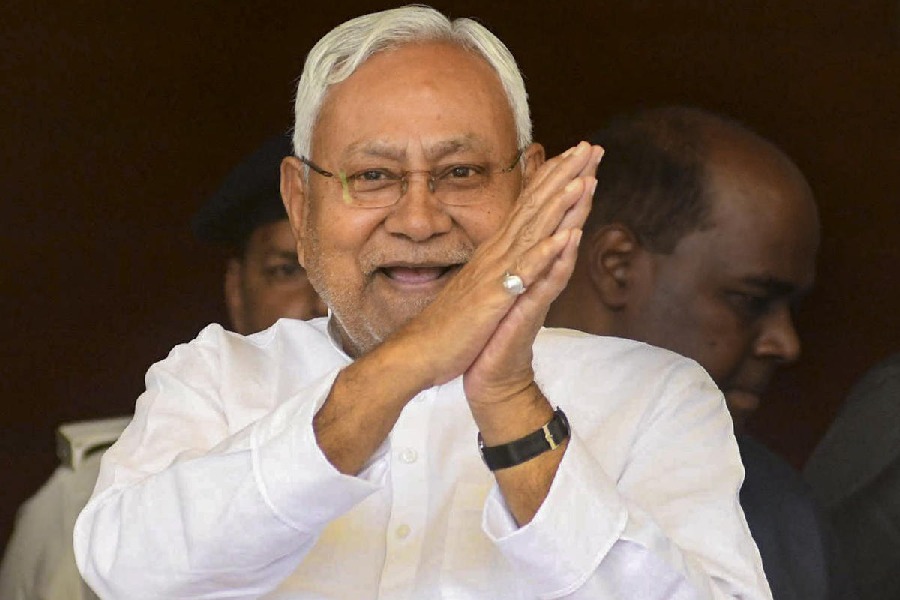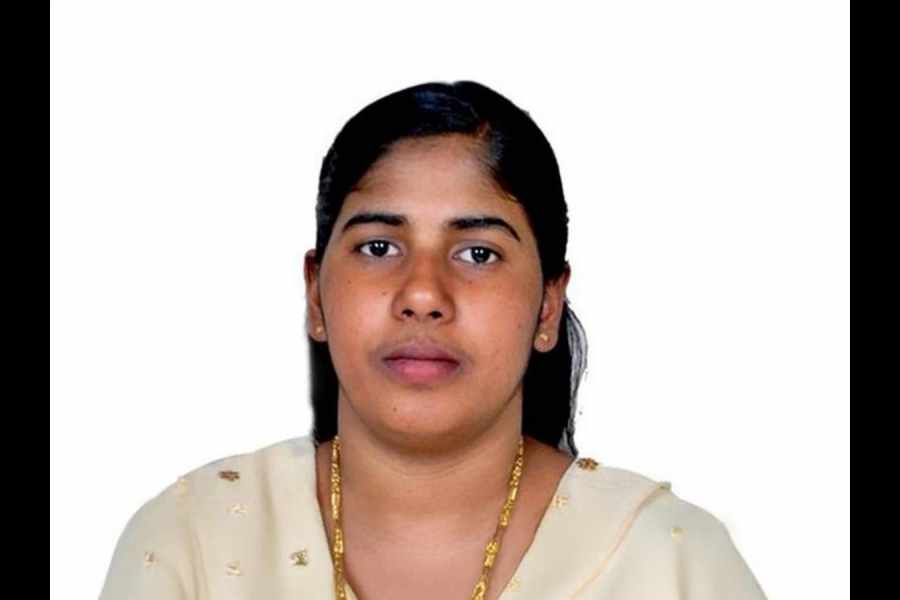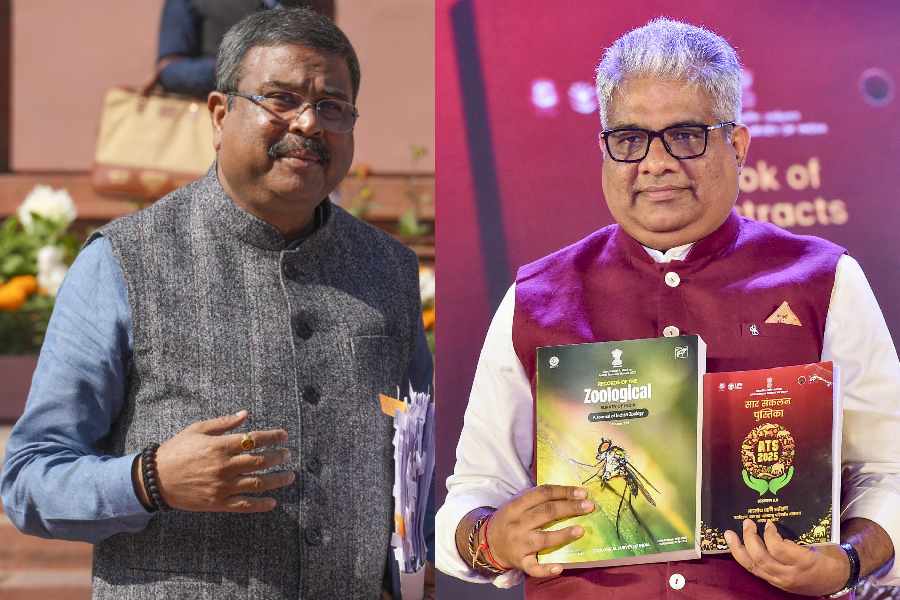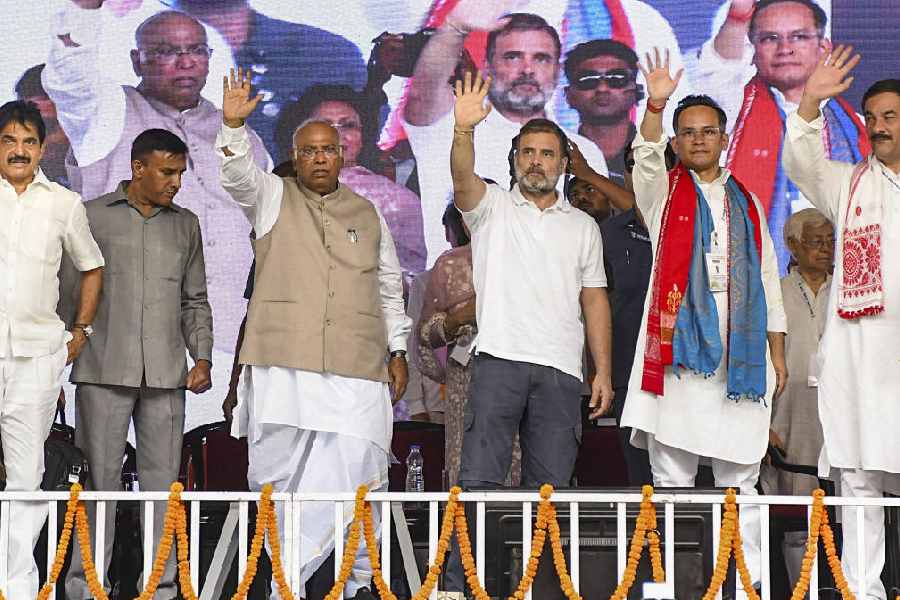 |
Holi Milan. The phrase itself is an amalgamation of colour, music and joy. The musical evening organized by Sangeet Ashram to celebrate Holi eve with splashes of colour, faag, gulaal (and, of course, music) was also a tutorial class for listeners, especially for those who merely know the difference among the semi-classical genres such as thumri, dadra, chaiti, kajri and the like. The artists of the evening were Shabina Mumtaaz Islam, Sanjukta Biswas, Manasi Majumder, Kakali Mukherjee and Sanjana Chakraborty. They started with a dhamaar in Raga Patdeep, followed by a kheyal in Raga Behaag. The chorus created a joyous mood for both the presentations, attracting the listeners. After this captivating introduction, the singers created the proper ambience for the celebration and focused attention on the main part of the programme — the presentation of Benaras and Purab Ang thumris and their sub-genres.
Shabina commenced with the thumri, “Koi jao saiyaan ko le aao”. The clarity and generosity of her voice were appreciable. Sanjukta’s rendition of “Mori ankhiyan dhund rahi” was beautiful too. These two artists perfectly portrayed the emotion and different shades of love. Manasi disappointed the audience in her presentation of “Holi khelo mose Nandalala”. Kakali’s “Saaware salone banke Shaam” was initially a little stiff, but soon her voice captured the mood of this song.
Sanjana tried to capture the tension of the main protagonists of this ancient rangoli festival — Radha and Krishna — through her presentation of a famous and nostalgic thumri, “Kaise yeh dhoom machayi Kanhaiyaa re”, originally composed and sung by Calcutta’s very own thumri queen, Gauhar Jaan, although very few of us are aware of the fact today.
In the next part of the programme, Shabina’s rendition of a well-known dadra, “Rang daari gulaabi chunariya”, created the magic of Holi. Manasi’s “Udat abeer gulaal” was also appropriate for the evening. The compositions, “Balamuwa kith gaye” and “Roye madhe chale jayo bedarda”, skilfully rendered by Sanjukta and Kakali, showed dadras can be presented in the keharwa taal too. Sanjana’s effort in presenting “Mope daaro na rang Giridhari” was good. But she needs to develop more.
Chaiti and kajari not only denote the traits of particular seasons like Chaitra and the monsoons but they also have a cultural significance. People can find reflections of the socio-economic realities of the rural life of our country in their lyrics. The vistaars of Shabina’s “Dola rakh de musafir” and Kakali’s “Ghiri kari badariya” easily made the audience feel the charm of varshaa rwitu, lovers’ pangs of separation and the grandeur of the season. Whereas Sanjukta’s chaiti, “Bin piya nidiya na aaye Rama”, had a beautiful but mild flavour of the Ram Navami festival, Manasi’s “Bairon re koyeliya” seemed weak. The enjoyable chorus, “Rang Daaroongi” made for a perfect ending to this musical milanotsav.










